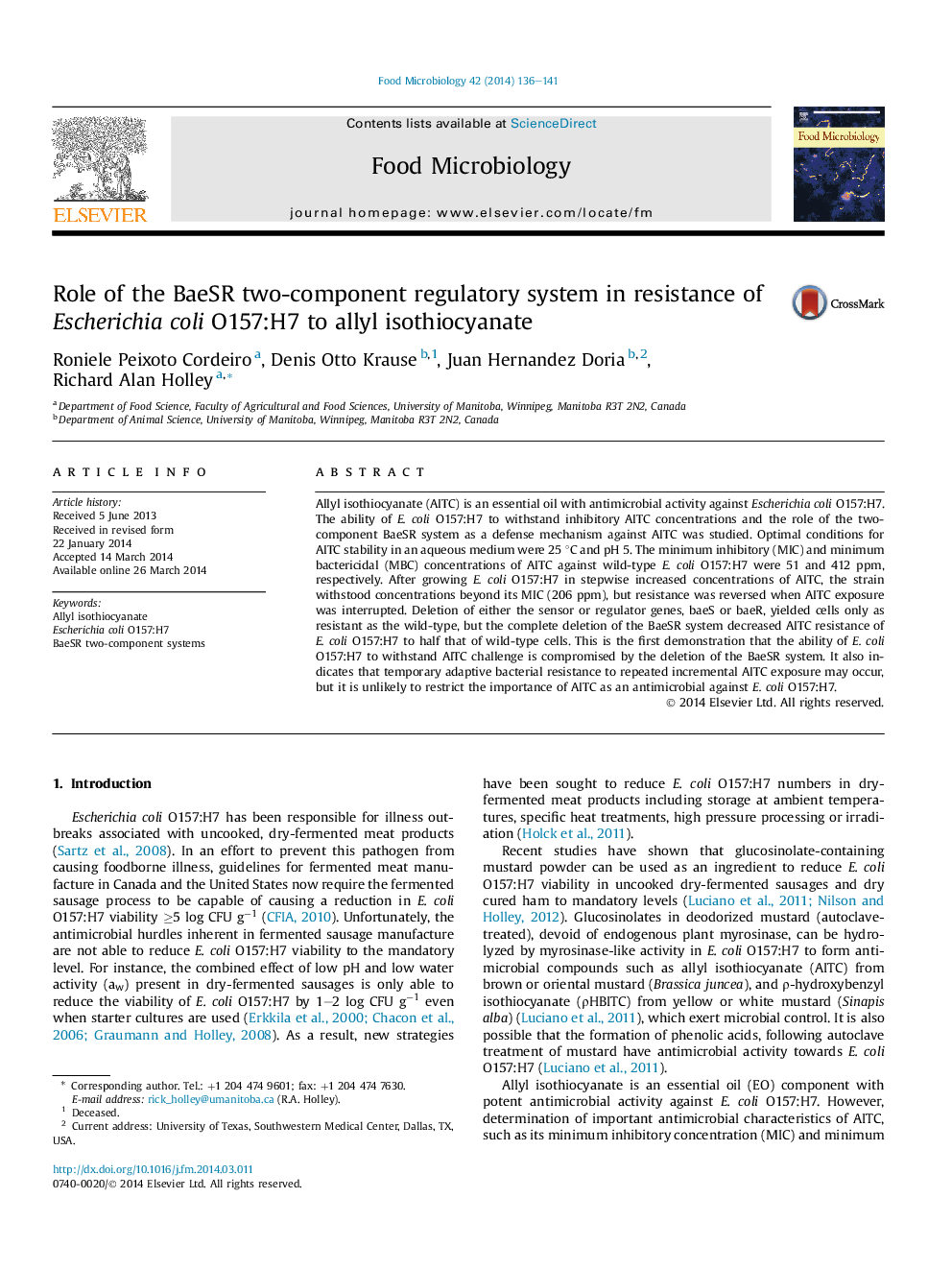| Article ID | Journal | Published Year | Pages | File Type |
|---|---|---|---|---|
| 4362893 | Food Microbiology | 2014 | 6 Pages |
•Aqueous medium at 25 °C and pH 5 enhanced AITC stability.•MIC and MBC of AITC against wild-type Escherichia coli O157:H7 were 51 and 412 ppm.•E. coli O157:H7 showed transient, adaptive resistance to incremental AITC levels.•Deletion of BaeSR genes reduced E. coli O157:H7 ability to withstand AITC toxicity.•Resistance development is not a limitation to AITC use as an antimicrobial.
Allyl isothiocyanate (AITC) is an essential oil with antimicrobial activity against Escherichia coli O157:H7. The ability of E. coli O157:H7 to withstand inhibitory AITC concentrations and the role of the two-component BaeSR system as a defense mechanism against AITC was studied. Optimal conditions for AITC stability in an aqueous medium were 25 °C and pH 5. The minimum inhibitory (MIC) and minimum bactericidal (MBC) concentrations of AITC against wild-type E. coli O157:H7 were 51 and 412 ppm, respectively. After growing E. coli O157:H7 in stepwise increased concentrations of AITC, the strain withstood concentrations beyond its MIC (206 ppm), but resistance was reversed when AITC exposure was interrupted. Deletion of either the sensor or regulator genes, baeS or baeR, yielded cells only as resistant as the wild-type, but the complete deletion of the BaeSR system decreased AITC resistance of E. coli O157:H7 to half that of wild-type cells. This is the first demonstration that the ability of E. coli O157:H7 to withstand AITC challenge is compromised by the deletion of the BaeSR system. It also indicates that temporary adaptive bacterial resistance to repeated incremental AITC exposure may occur, but it is unlikely to restrict the importance of AITC as an antimicrobial against E. coli O157:H7.
